I think all pitch decks should start with the problem slide, i.e. a discussion about the problem you solve. It sets the stage for why your startup exists and why someone should care. This the beginning of your own story and why you care deeply about this problem.
There are always exceptions. If you have really impressive traction you can start there to get investors salivating. You could start with the market, but it’s tough to do that without diving into the problem (i.e. it’s a market for what?).
Otherwise, start with the problem. As the first slide you have to get this right. If your audience doesn’t get the problem or care about it, why would they listen to the rest of your pitch?
Key points I cover:
- Make your problem visceral.
- Focus on who has the problem.
- Be specific. Like country music.
- Describe the problem in terms of pains and gains.
- Talk about impact.
- Self-evaluation checklist.
Subscribe for free to receive weekly posts, a copy of my ebook Pitching a Leap of Faith, and invitations to my weekly Pitch Masterclass.
Focus on who has the problem.
A shocking number of problem slides never mention who has the problem. This is especially true in consumer businesses where entrepreneurs assume the problem applies to everyone (it doesn’t). Showing and telling who experiences the problem is the first indication of whether you have in-depth knowledge of your space.
You can’t have a problem statement without mentioning who has the problem.
Describing the person or business anchors your pitch in reality and sets up who your customers are. Problem slides should always show who you sell to.
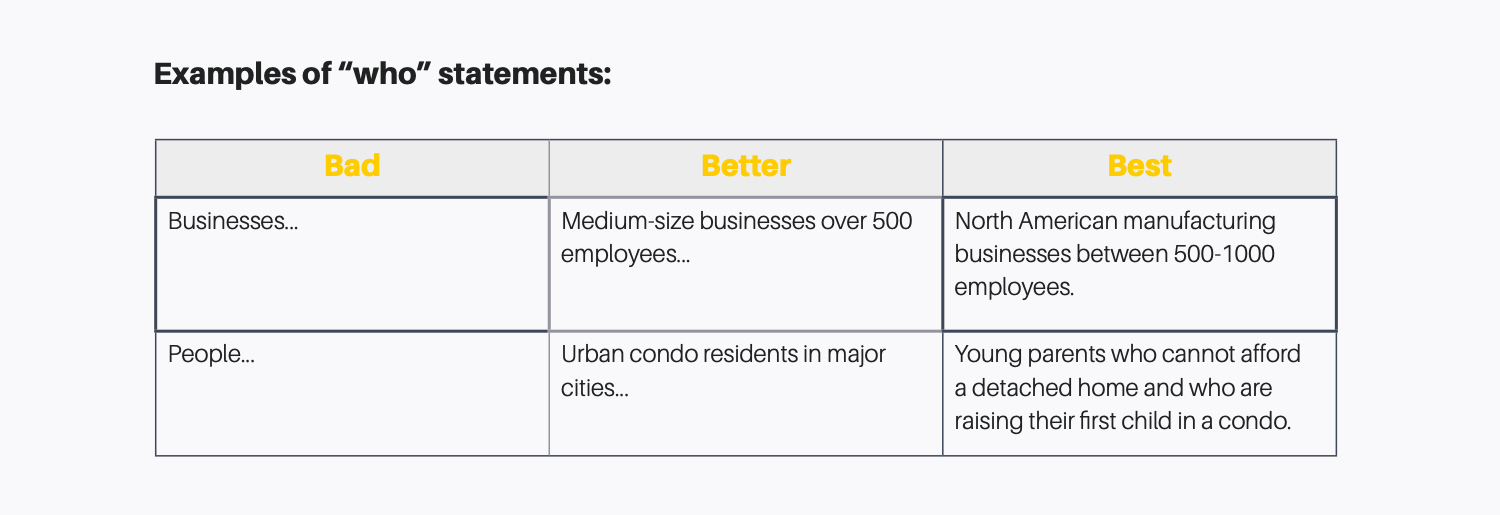
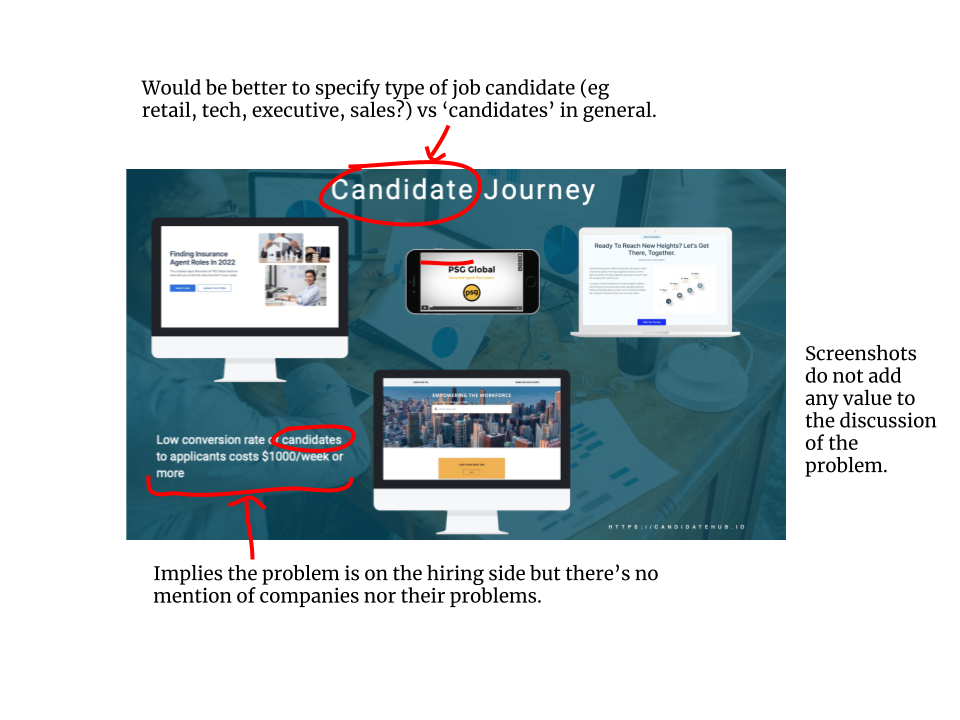
Source: https://candidatehub.io/ - this was from a deck meant to be presented so I’m sure some missing info would have been covered live.
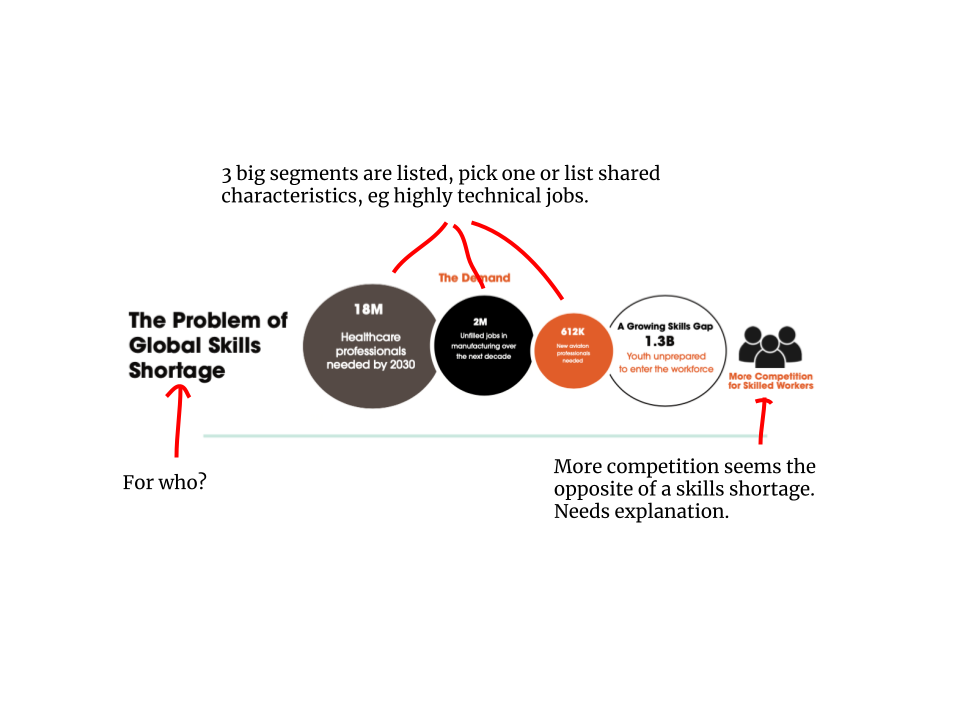
Source: https://vrcity.ca/
Be specific. Like country music.
In Revisionist History, Malcolm Gladwell talks about how rock lyrics are abstract and country lyrics are specific.
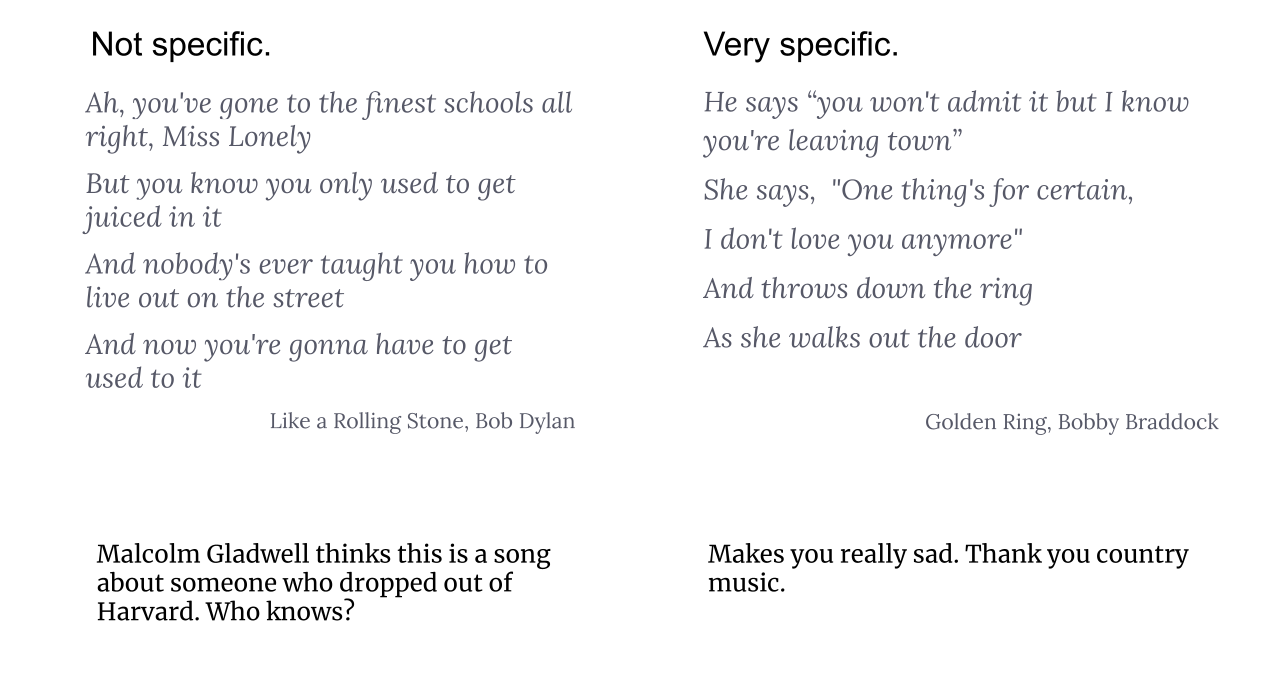
The soundtrack to your problem slide should definitely be country music. You need to get specific when you talk about your problem. Avoid jargon or generalities and really paint a picture that will leave an impression on your audience.
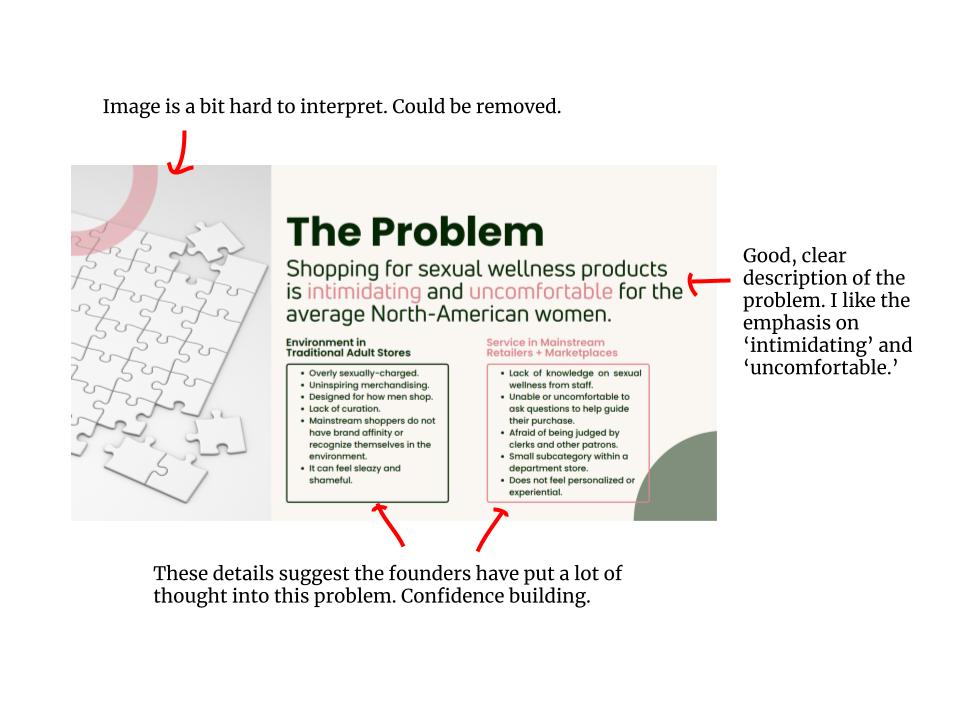
Source: https://itsthelake.com/
Make it visceral.
Visceral: felt in or as if in the internal organs of the body
Don’t just lecture about problems. Make your audience feel the pain. Numbers and statistics are good for creating a rational response, but you want to tap into emotions. Building strong empathy for your problem is the ideal setup for telling a story about why your company exists.
Tips:
- Avoid stock photography. Use real people’s names and photos if possible, or show a picture of an actual business you serve.
- Describing a gap in the market or a financial opportunity is not enough. Get to the root of the pain and who feels it.
- Talk about yourself. This is a great place to talk about your own origin story and how you decided this was a problem you had to solve.
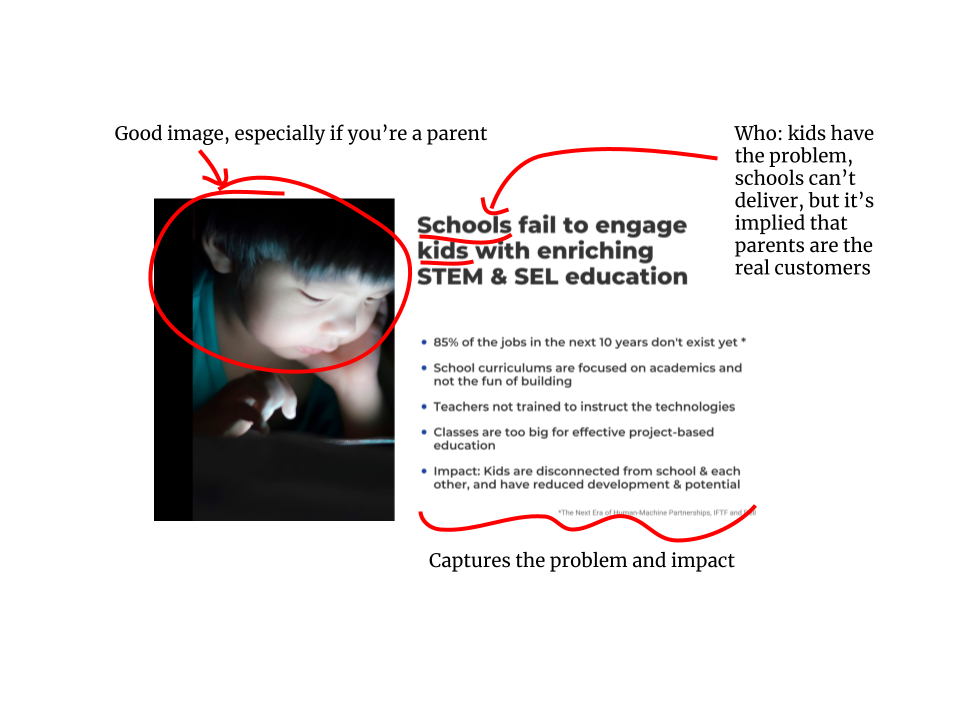
Source: https://makerkids.com/
Describe the problem in terms of pains and gains.
Now that we know who has the problem, we can move on to describing the problem itself. Do not, I am begging you, define your problem statement as a lack of your product:
People don’t have access to a wifi-enabled juicer that can also read poetry.
See how the product is cleverly inserted there? Now logically the solution is...VitaPoet! But we’re not ready to talk about your product in the story, yet.
The Value Proposition Canvas is a good place to start and a great resource all around. I’ll summarize two key concepts: pains and gains. Your problem will address one and possibly both.
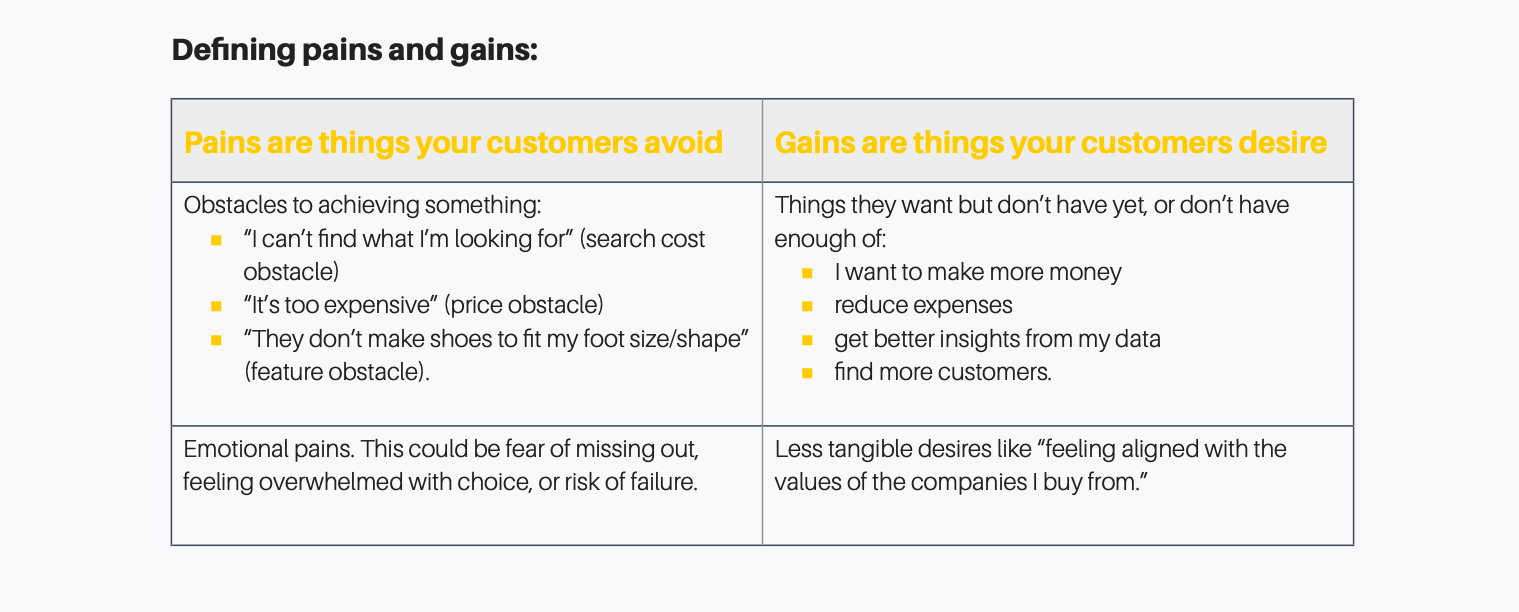
These pains (or lack of gains) cause the dissatisfaction that your product satisfies.
Pains and gains are not hypothetical. They’re real things being experienced by real customers. This means you should describe them in real detail. It’s a red flag if you can’t.
Give the impression that you could spend an hour just talking about the problem in detail.
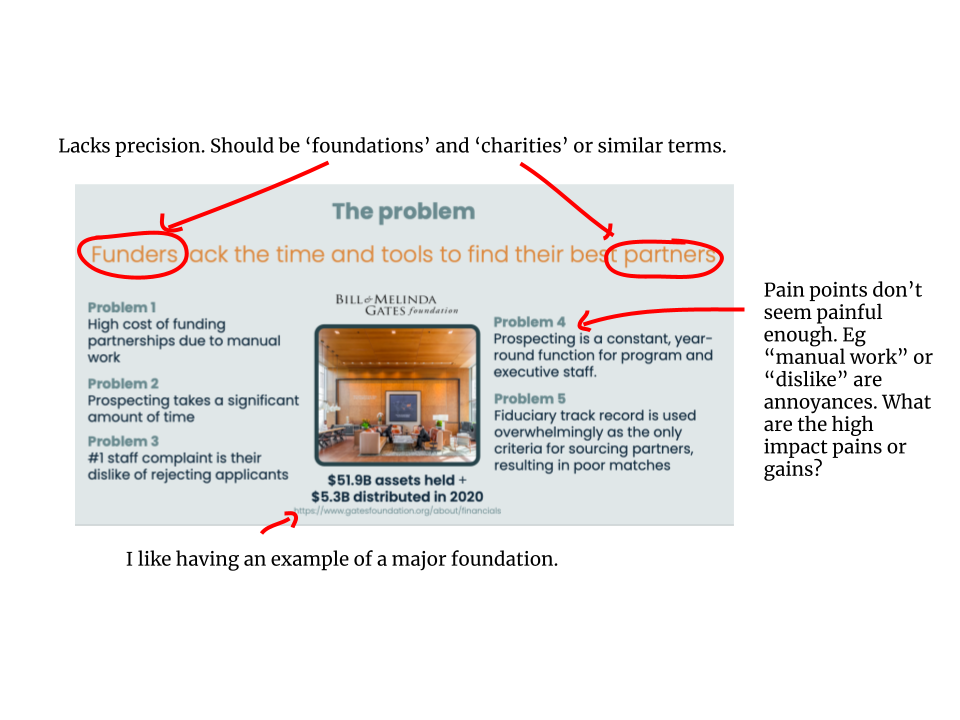
Source: https://orgmatch.com/
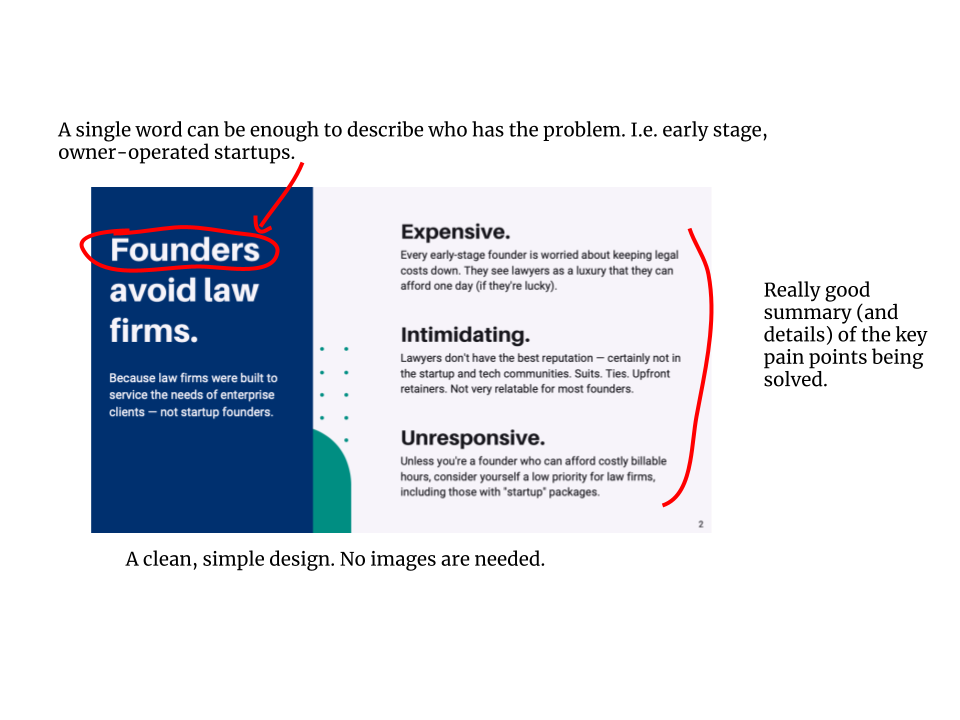
Source: https://www.goodlawyer.ca/
Describe the impact.
What’s the impact of the problem (on the people/businesses you already described)? What are they losing or not gaining when they have this problem? Lost money, lost opportunities, physical pain, lost time, anxiety. Your story should put your audience in the shoes of who has this problem and leave them feeling the pain.
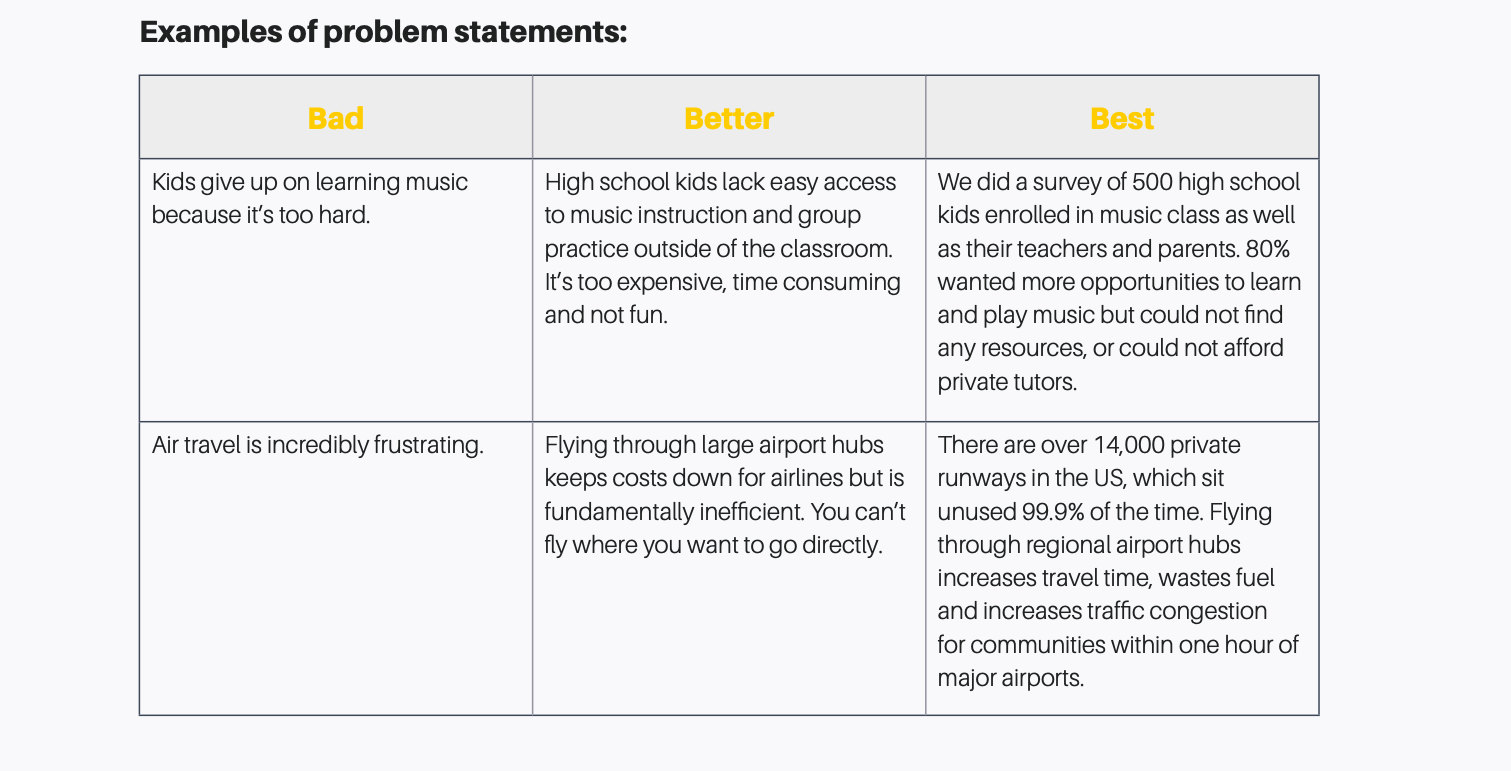
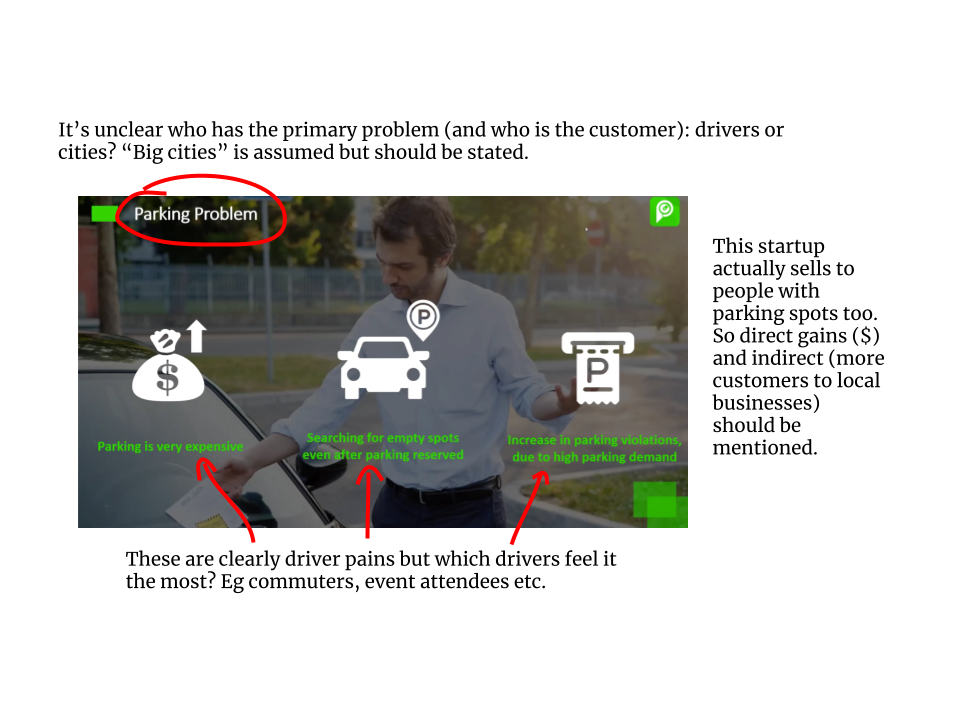
Source: https://www.loopparking.ca/
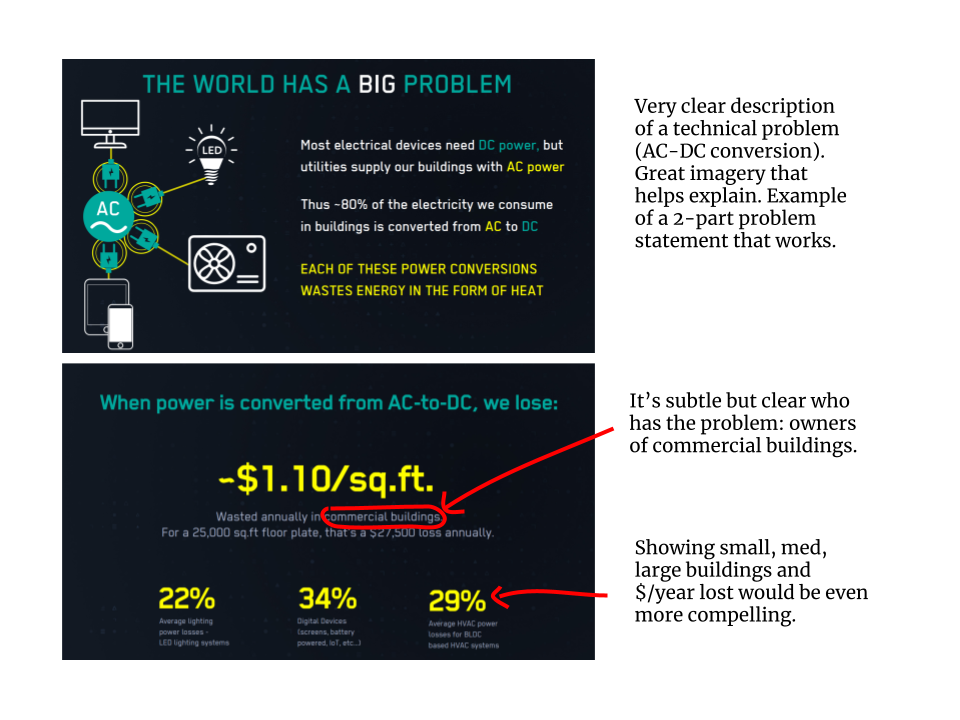
Source: https://www.argentum.ai/
Self-evaluation checklist.
After your problem slide your audience should know:
- Why your company exists
- Why you personally care about this problem
- Why this is a big enough problem to start a company around
Checklist:
___ Do you mention who has the problem?
___ Is your ‘who’ specific and segmented so it’s clear who you sell to?
___ Do you talk about pains or lack of gains?
___ Is it clear what the impact is of not solving this problem?
___ Is your story only rational or also visceral? Do you make investors feel something in their gut?
___Do you talk about why you care about this problem personally?
If you’ve checked all these boxes you’ve got a great problem slide and the beginning of a great pitch deck.
Read the next post: Solution »
Thanks for reading Raymond’s Newsletter! Subscribe for free to receive new posts and support my work.




